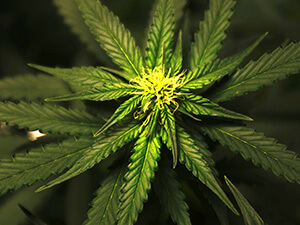Commercial cannabis growing, harvesting, drying and extraction operations all release odors and volatile organic compounds (VOCs) that can be regulated by local authorities and/or considered a nuisance by employees and/or neighbors. At times, Owners need to take action and install cannabis a VOC control or odor control system. An earlier blog (see Cannabis Odor Control 1 of 2 Blog) addressed odor emissions from the first three of these processes (i.e., from cannabis growing, harvesting, and drying). This blog addresses VOC control and odor control for cannabis extraction processes.
drying and extraction operations all release odors and volatile organic compounds (VOCs) that can be regulated by local authorities and/or considered a nuisance by employees and/or neighbors. At times, Owners need to take action and install cannabis a VOC control or odor control system. An earlier blog (see Cannabis Odor Control 1 of 2 Blog) addressed odor emissions from the first three of these processes (i.e., from cannabis growing, harvesting, and drying). This blog addresses VOC control and odor control for cannabis extraction processes.
After cannabis harvesting, an extraction process is required to extricate the marketable components of the plant – CBD oil, THC concentrate and other cannabinoids — from the remaining plant matter. The extraction processes employed by companies include use of a variety of solvents to dissolve the cannabinoid solutes – such as CO2, ethanol or another alcohol, butane, and ice water.
VOC emissions are released during the extraction process, often requiring the addition of VOC control equipment. VOCs emitted by the extraction process depend on the type of extraction process being used but can include butane, ethanol, and terpenes, among other hydrocarbons.
VOC Control
VOC control on the extraction process may be required by regulatory authorities in certain jurisdictions. If VOC control is required, the best VOC control solution for smaller-scale extraction processes is a small activated carbon adsorption system. An activated carbon adsorption system will have the lowest capital cost and reasonable operating costs for smaller processes. For larger-scale extraction processes, activated carbon adsorption systems can have high carbon usage rates, depending on the solvent being used and the specifics of the equipment, and this approach should be compared with an oxidizer. APC makes both types of equipment – activated carbon adsorption systems and oxidizers – and can provide estimated capital and operating costs for both technologies for larger-scale extraction operations.
Odor Control
If VOC control is not required by local authorities and only odor control is needed, activated carbon adsorption systems are far and away the best approach for the odor control system.
As with cannabis growing, harvesting and drying, odors from cannabis extraction processes are usually in the form of terpenes – hydrocarbon compounds that can have anything from a pleasant floral smell to a skunk smell, along with a multitude of other smells between/around these – or as terpenoids, which are terpenes modified by an additional functional group.
To control odors from terpene and terpenoid emissions, a small activated carbon adsorption system provides high odor control efficiency, low capital cost, and very reasonable operating costs, as activated carbon has a very high capacity for these compounds. APC provides these small, customized activated carbon systems (APC’s CarbonPure line) for odor control at cannabis extraction facilities. These systems commonly include a small vessel containing a bed of the proper type and amount of activated carbon, a small blower to move air through the system, interconnecting ductwork and possibly exhaust ‘stack,’ and instruments and controls. Other components can also be included.
Odorous air enters the CarbonPure system and clean, fresh air with no odors is discharged from the system. In the carbon bed, the odorous terpenes and terpenoids adsorb and become attached to the activated carbon such that they cannot escape from the carbon until it is recycled in an incinerator at a carbon regeneration facility. As soon as the spent carbon bed is removed, a fresh activated carbon bed replaces the spent one, a change-out process that is quick and simple.
One alternative to an activated carbon adsorption system is to use a “neutralizing” or masking agent that does not actually remove hydrocarbons from the air; rather, it either covers the terpenes and terpenoids up (i.e., “masks” them) or reacts with them in some manner to form other (usually unnatural) compounds. The problems with this approach were outlined near the end of the earlier blog (Cannabis Odor Control 1 of 2). In short, activated carbon adsorption systems are the safer, liability-free odor control system design option.
APC has provided CarbonPure activated carbon adsorption systems for VOC control and odor control to industrial, commercial, and municipal operations for decades. Contact APC today for your cannabis VOC control and odor control system needs.

